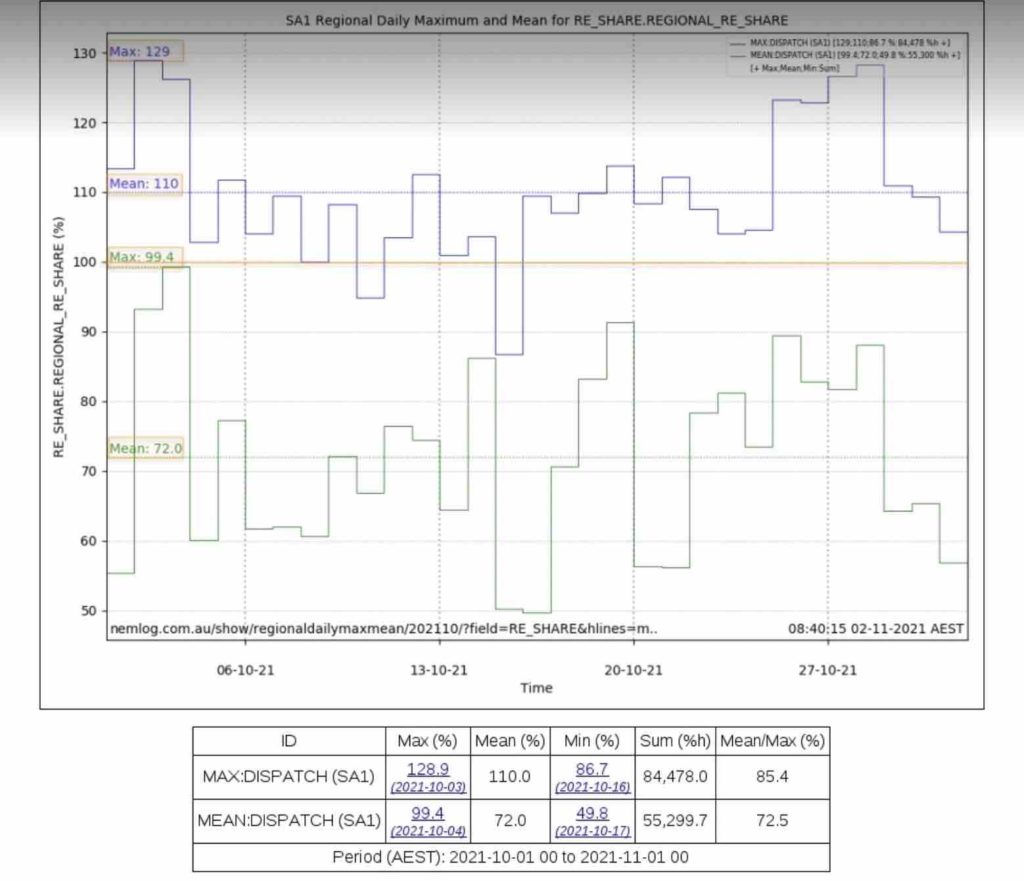Wind and solar met 100 per cent of more of local demand in South Australia’s main grid in all but two days in the month of October, surely a new record for a gigawatt scale grid anywhere in the world.
The average share of wind and solar over October was 72 per cent, making a nonsense of claims – gladly echoed by anti-renewable ideologues and pro-nuclear activists – that no grid could possible support more than 50 per cent of variable renewable output.
South Australia is living proof that it can. Over the past year, it has averaged more than 62 per cent wind and solar, and the boost in October is seasonal, thanks to good wind, good sun, and mild weather that leads to moderate demand.
The state Liberal government has a goal of averaging 100 per cent wind and solar by 2030, and will very likely reach that benchmark a lot earlier, thanks to a new transmission link to NSW, the recent removal of many constraints on wind and solar farms, and the introduction of new storage and smart software.
In October, South Australia mostly reached periods of 100 per cent renewables through a combination of wind and solar.
However, solar managed to deliver more than 100 per cent on its own at various points on several days. Wind often delivered more than 100 per cent of local demand overnight and in the early morning.
According to energy data analyst Geoff Eldridge, of NEMLog, the highest average renewables share for a whole day was 99 per cent on October 4, and the lowest daily average for renewables in the month was 49.5 per cent on October 17.

The state’s three big batteries – at Hornsdale, Lake Bonney and Dalrymple North – play a critical role.
Even though they are mocked for not being able to power a big state, or big energy user for more than a few minutes (actually, none of them are big enough to do that for a single second), they play a crucial role in maintaining grid stability.
They do this by very fast response to frequency excursion, that can give other slower moving machinery time to respond without putting supply at risk.
South Australia is leading in the roll out of battery inverters that can provide synthetic inertia and act as “virtual synchronous machines”.
It has also installed four synchronous condensers that do away with the need to have gas generators provide system strength, and also allow wind and solar farms to operate with fewer constraints. These syncons are expected to be superseded at some point by battery inverter technology.










